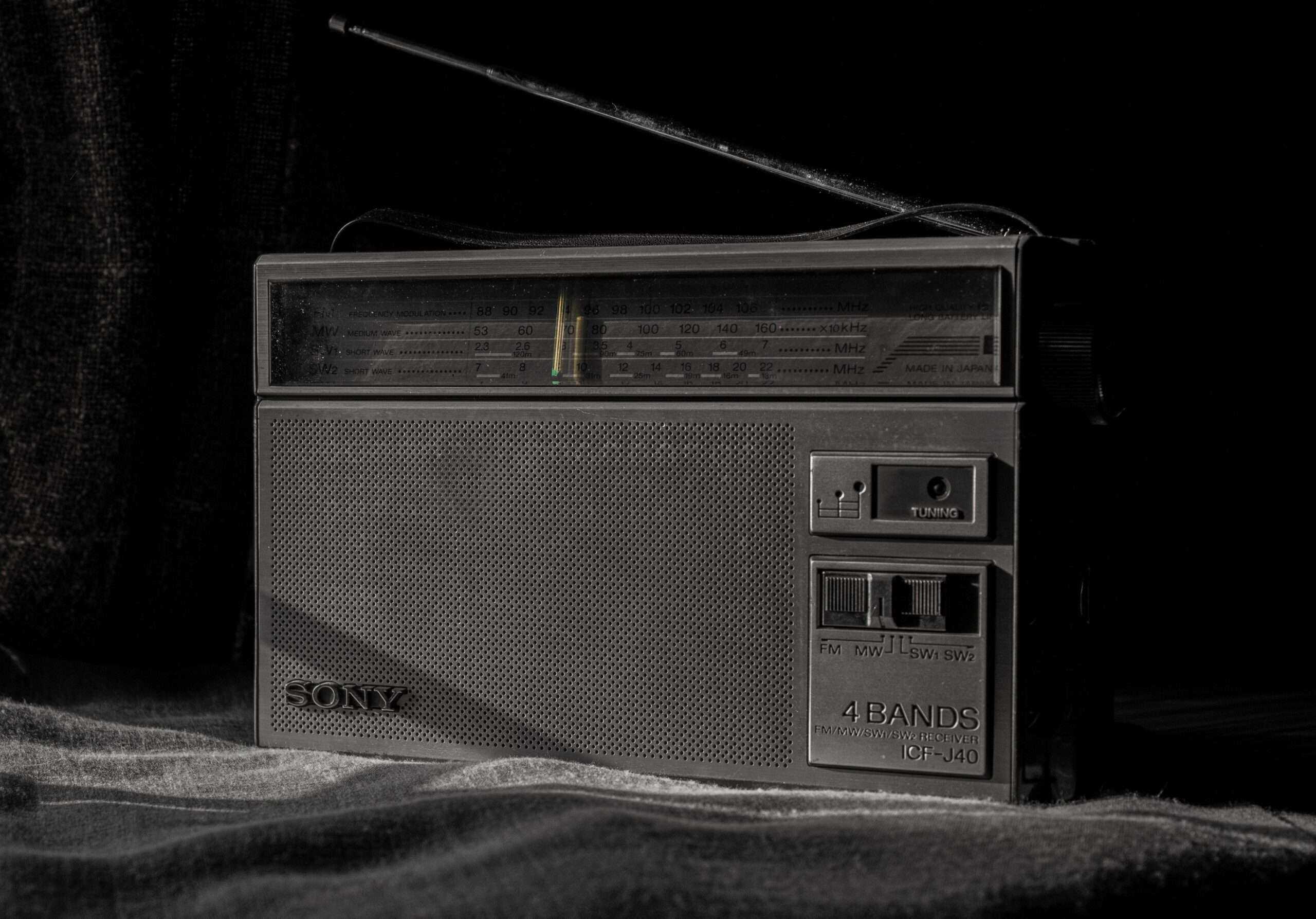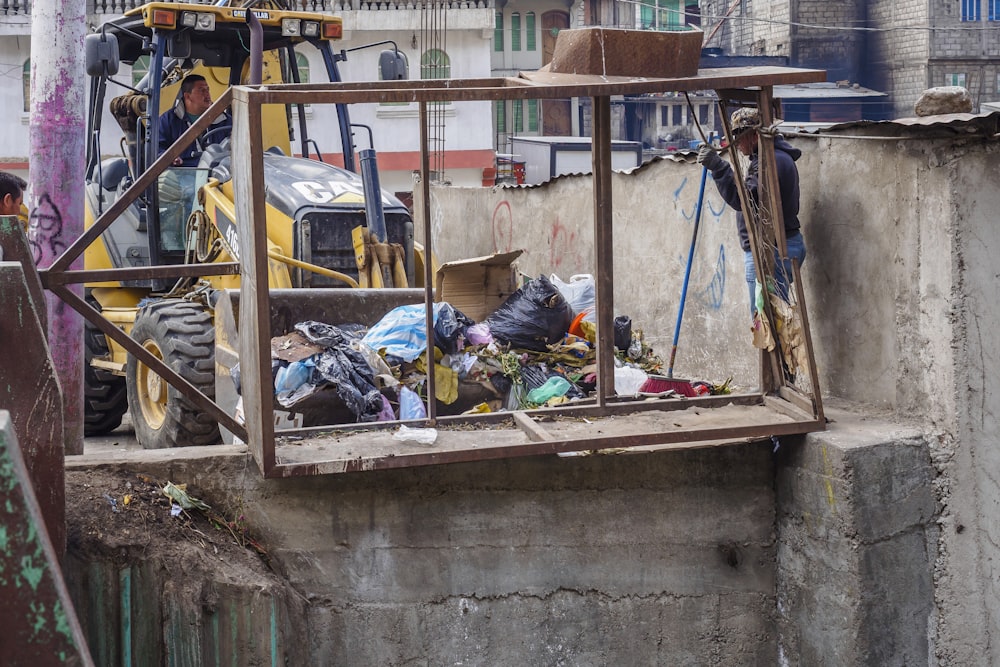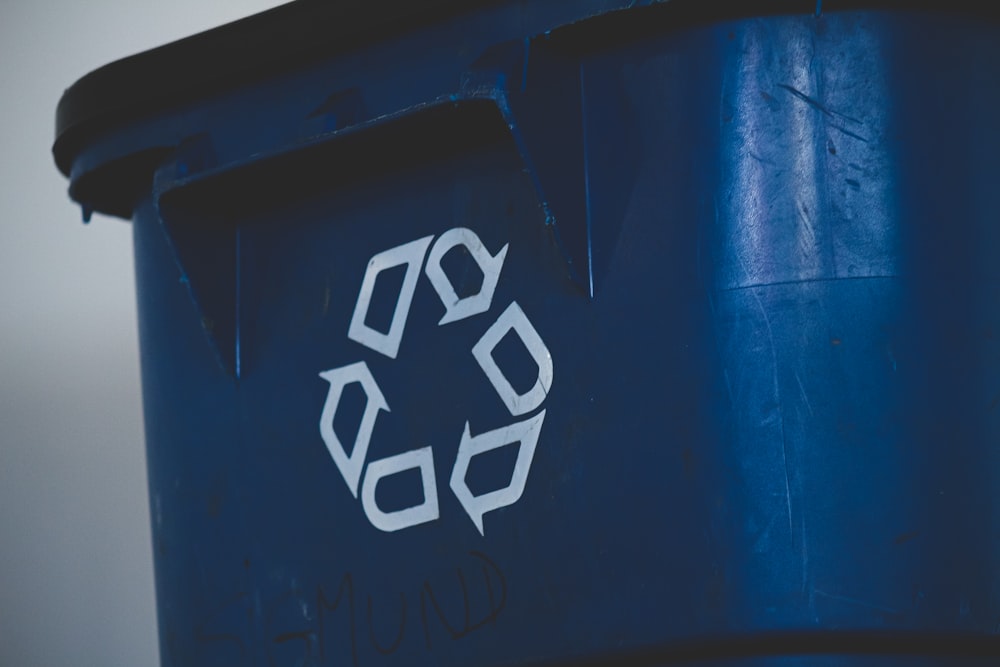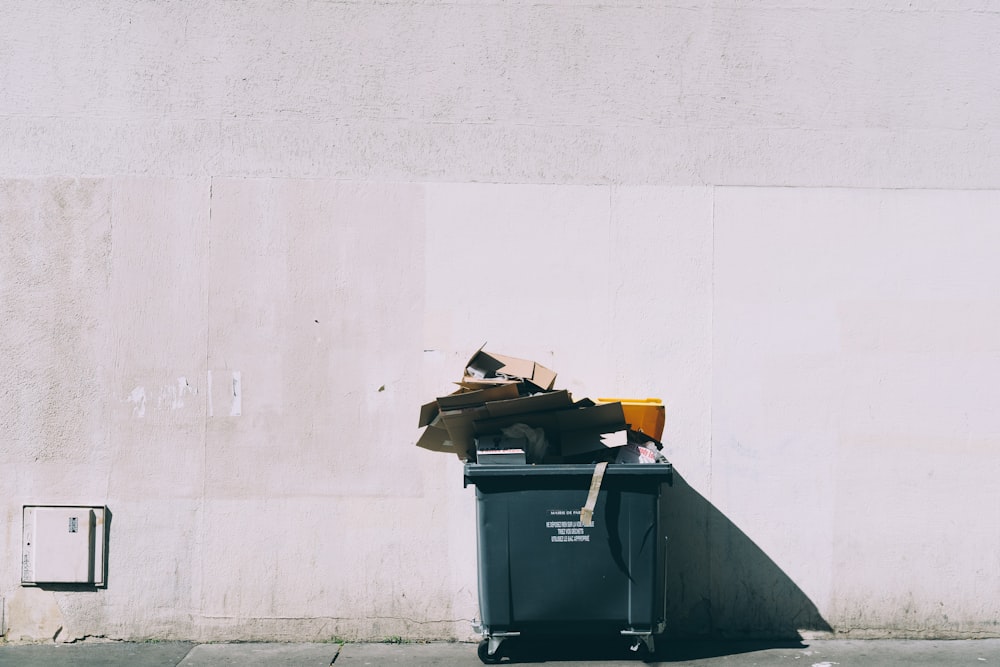When your appliances start acting wonky or need an upgrade, the first step is selecting new pieces that work for your budget and household. But once you have replaced the items, you might wonder how to dispose of the old ones. Did you know that you can recycle household appliances? It’s not as easy as tossing them in the recycle bin, however. Different appliances have distinct guidelines for disposal and safety. While your curbside pickup may have special exceptions for bulky items, you’ll need to find out whether it accepts certain appliances. This article provides guidelines for how to recycle appliances so that you can do your part to protect the environment and even safeguard your budget. If you find yourself in need of professional assistance to manage the clutter in your residential or commercial space, Jiffy Junk offers a blend of professionalism and eco-friendly junk removal services designed to meet various needs. The process for recycling small appliances, electronics and large appliances differs depending on the item. Most appliances are made up of various components, some of which can pose an environmental hazard if they’re not disposed of properly. During the recycling process, hazardous components, such as those that contain coolants, mercury or oils, are separated from metals, glass, plastic and foam. Each compound is recycled appropriately. In some cases, appliances are refurbished and reused. Programs such as the EPA’s Responsible Appliance Disposal program promote appliance recycling, encouraging the replacement of outdated, inefficient models and fostering safe handling of hazardous substances. When upgrading your home appliances, efficiently dispose of the old units with Jiffy Junk’s specialized appliance removal services, ensuring a hassle-free and eco-friendly process. Many people aren’t aware that recycling is available for most of their small and large appliances. While there are many companies that will haul your junk, you should use one that follows environmentally friendly practices for removal and recycling. Appliance recycling is available for the following items: • Phones and chargers • Remote controls • VCRs • Lamps • Electric shavers • Small office electronics, such as keyboards and mice • Microwaves • Dishwashers • Refrigerators • Washing machines • Stoves When your small appliances break, don’t just throw them in the trash. Learn about small appliance recycling so that you can dispose of the following household electronics properly. The average smartphone user replaces their phone about every two years. You may already know that you should recycle your old phones. Many retailers and cellular providers offer phone recycling and disposal services. But you should also recycle chargers for phones, tablets and other electronic devices. You can donate them or drop them off at a kiosk at some major electronics retailers, such as Best Buy. Here are some things that you should do when recycling phones: There are some things that you should not do when considering an old phone recycle: Do you have remote controls collecting dust in a closet? Recycle remote controls that are outdated, broken or no longer used. You may be able to donate old remote controls to vocational schools or thrift stores. Otherwise, an authorized recycler should be able to take care of the device for you. Most people aren’t aware that recycling remote controls is an option. If you have one or several that you don’t need anymore, the following steps will allow you to dispose of them appropriately: If you want to recycle remote controls, there are a few things that you should not do, including: It might be time to get rid of an old VCR that you have lying around. Although selling it might be challenging and thrift stores might not accept donations, you can recycle VCRs at large electronics retailers or e-waste recyclers. Before you recycle VCRs, consider the following suggestions: Recycling VCRs appropriately is possible if you keep these don’ts in mind: Large, bulky lamps can take up space in a landfill. You may be able to recycle lamps, depending on what they’re made of. Thrift shops and home décor consignment centers usually accept old lamps that are in working condition. You will usually have to recycle the bulbs separately, however. The following recommendations will allow you to recycle lamps more effectively: You should take the following precautions into account when you recycle lamps: Don’t throw out your electric trimmers, razors or clippers. You can recycle electric shavers as e-waste. Some recyclers require you to remove the circuitry. Others accept the entire product. Many household electronics recycling facilities accept electric shavers. Some online companies specialize in recycling this type of item. It’s not as easy to recycle an electric shaver as it is to recycle other e-waste. Consider the following suggestions if you’re getting rid of personal grooming appliances: There are a few things that you should not do when you recycle electric shaver: It’s often cheaper to replace a broken toaster than fix it. But the old appliance can take up space in a landfill and leach heavy metals. While some say that you can dispose of the toaster in the garbage, it’s best to recycle it. Most household hazardous waste sites accept toasters. E-waste recyclers often accept toasters with electronic features and digital displays. You have several options to recycle toaster ovens: Don’t make the following mistakes when you get rid of your old toaster: It can be frustrating when your power tools stop working. You may be tempted to toss them when you purchase a replacement, but there is a better option. You can recycle power tools, such as drills, nail guns, leaf blowers, planers, saws and routers. Even sewing machines and lawnmowers can be recycled. Check out the following list of things that you should do when you recycle power tools: Here are some things that you should not do when you recycle power tools: Small office electronics and accessories usually contain a great deal of plastic and other recyclable materials. Recycle keyboards, mice, speakers, routers, hard drives, printers and scanners. You can do this in bulk if you manage an office or in smaller quantities if you’re getting rid of personal office accessories and electronics. Keyboards and other electronic accessories aren’t biodegradable. Plus, they may be coated with flame retardants that are harmful to the environment. Follow the advice below to recycle keyboards and other small office equipment: You should keep the following tips in mind when you recycle keyboards and electronic accessories: Did you know that you can recycle large appliances? Your city may offer e-waste collection and recycling. You can also use a junk hauling service that accepts these items. If there is some life left in your microwave, you can donate it or give it away. However, if you’re ready to dispose of it for good, consider recycling it. A microwave counts as e-waste, and it contains a variety of recyclable materials. An appliance recycling program or mail-in microwave recycling organization should take care of it. The manufacturer may also offer recycling and trade-ins. Recyclers may dismantle a microwave to salvage the cord, bulbs, magnets and metal parts. You may choose to do this yourself and recycle the parts separately. If you go this route, be careful. Never dismantle a microwave while it’s plugged in. Start by snipping off the cord with wire cutters. Then, remove all the visible screws from the back of the appliance. You can peel off the metal panels from the back, sides, and top of the microwave and recycle them at a scrapyard. Continue to remove visible screws, disassembling the internal components. Remove any copper wires, stripping them of their coating before recycling the metal. Some people take apart the magnetron to save the strong magnets inside. If you choose to do this, do not scratch or damage the ceramic insulators. They contain a compound that is toxic when inhaled. Although nothing is stopping you from tossing your microwave in a dumpster, it’s best to keep these types of electronics out of landfills. Some people believe that an old microwave will leak radiation in a landfill. While a malfunctioning microwave can leak radiation while it is in operation, it won’t do so in the trash. But it can leach harmful compounds and heavy metals into the ground. If you’re wondering where to recycle microwaves and don’t want to take the appliance to the recycling facility yourself, scrap it with a service that picks up scrap metal pieces or complete appliances. You can also call your trash service to find out whether they collect e-waste on specific days or allow you to request a special pickup. The following microwave recycling tips should be on your list of things to do when recycling a microwave: Don’t make these microwave recycling mistakes: Dishwashers have advanced over the past decade. If yours doesn’t work as well as it once did or you are remodelling your kitchen, you may come across dishwasher disposal services. Some of these haul the appliance to the landfill. Others offer to recycle. The most environmentally friendly option is to recycle the old appliance. If it works well, consider selling it on a local online marketplace or donating it. If not, check with a junk hauler to learn whether they can pick it up and recycle it for you. Before you recycle old dishwashers, you can reclaim some of their parts for other uses. Upcycling keeps items out of landfills. Get creative, and give your dishwasher new life. Cutlery baskets are ideal for holding and organizing loose household items. Save yours, and use it in the office to collect pens and pencils. Put it in the bathroom to keep toothbrushes and makeup tools handy. Use it to carry tools or gardening supplies. The wire racks can be repurposed as storage drawers for your cabinets or under the bed. The rest of the dishwasher can be used for storage in the garage or basement. The flat-top doubles as a workspace. Some things that you should do when you recycle dishwashers include: Make sure that you don’t do the following things when it comes to dishwasher recycling: A refrigerator is one of the largest appliances that you’ll ever need to dispose of. It has a lot of metal and plastic parts that can be recycled. But you can reuse some of those components to save energy and help the environment. A refrigerator makes an excellent cooler. Even if it doesn’t work, you can use it to store drinks at your next backyard barbecue. A vintage refrigerator makes an appealing bookcase. You can close the door to conceal clutter and use the outside as a magnetic bulletin board. Creative people around the internet have transformed refrigerators into cabinets, couches and wine cellars. You could even place the appliance on its side and use it as an outdoor pet shelter for your furry friend. The refrigerator disposal process is similar to the procedure for getting rid of other large kitchen appliances. However, there is one significant difference. Refrigerators contain coolant and foam insulation. Both of those compounds are hazardous to the environment. Therefore, you should use a dedicated service that recycles these appliances. If you call your local trash service, let them know that you’re disposing of a refrigerator so that they can use the proper methods for removing the toxic substances. Many retailers will remove your old refrigerator when they install the new one. They may refurbish and resell it or send it to an appliance recycling facility. If protecting the environment is important to you, make sure that the company doesn’t leave the refrigerator in a landfill. Refrigerators are heavy, bulky and challenging to dispose of. The following guidelines will help you dispose of the refrigerator properly: • Understand the refrigerator disposal guidelines for large appliance recycling. The tips below teach you what you should avoid when getting rid of a refrigerator: You can recycle washing machines in unique ways by repurposing their parts. The most valuable component for DIY projects may be the drum that contains your clothing and water. This part is large, sturdy and versatile. You can repurpose it as a fire pit, planter, lampshade, ottoman or end table. Before you upcycle the drum for a project, however, identify what it is made of. Some are plastic, which is ideal for outdoor projects and those that will be exposed to water. However, those aren’t ideal for heat applications, such as a fire pit. Stainless steel and porcelain tubs can be used as fire pits or other items. Keep the advice below in mind when scrapping, selling or recycling your washing machine: Below is a set of guidelines that tell you what to avoid when you recycle washing machines: You can recycle stoves in an environmentally friendly way by repurposing them or recycling them. As with other appliances, donate or sell the item if it’s still in good shape. Inquire about removal and recycling options if a new appliance is being installed. If you use the stove in a project, cut off the cord to avoid fire or electrocution. Then, you can transform the stove into another useful item. Add a chimney for exhaust, and use the oven as an outdoor fireplace. Place potted plants on the open door for a conversation starter in the garden. You can place the plants inside and shut the door during cold weather. Remove the heating elements on the stove, and paint them to make creative artwork to hang in your home or yard. Many of a stove’s components are recyclable. Here’s some helpful advice for stove recycling: Don’t do the following things when it comes to stove recycling: We have discussed the logistics behind household appliance recycling. Now it’s time to talk about why you would want to go this route. You probably know that recycling helps to protect the environment. But it can also protect your budget by earning you discounts, reductions on your energy bill and cold, hard cash. Older appliances tend to use less energy than new ones. That’s because advancements in technology have made newer appliances more efficient. Even if your appliance still works, you may be able to reduce your energy consumption and save money on your power bills by replacing it with a newer model. Since the National Appliance Energy Conservation Act of 1987 was passed, households have saved an average of $500 per year on their utility bills. New, Energy Star washing machines use approximately 75 percent less water than the same appliance from two decades ago. Most refrigerators last about 15 to 20 years. Your older refrigerator could be using up to 1,700 kWh of energy per year. In comparison, an Energy Star certified refrigerator of the same size may only use approximately 450 kWh of energy. Since the National Appliance Energy Conservation Act of 1987 was passed, households have saved an average of $500 per year on their utility bills. New, Energy Star washing machines use approximately 75 percent less water than the same appliance from two decades ago. Newer dishwashers use about half as much water and clean better than older ones. Appliance recycling allows you to upgrade your old items, save money, reduce your energy use and give the materials from your old appliances new life. It often takes less energy to recycle used materials than to produce them from scratch. Therefore, recycling your appliances reduces energy consumption outside the household too. Landfill capacity in the U.S. is steadily decreasing. Items in a landfill don’t decompose very quickly because they are often sealed and lack oxygen. Moreover, landfills aren’t designed to break down garbage. They are created for storage. Eventually, that storage space will reach capacity. Some experts predict that we only have about 15 years of landfill capacity left. Certain regions have even less. Many states ship their garbage somewhere else because they have nowhere to put it. The world generates about 50 million tons of e-waste every year. Approximately 2% of U.S. landfill space is taken up by electronics, and those items make up about 70% of the total toxic waste in the country. You can reduce the amount of garbage that sits on our land, leaks pollutants into the soil and produces methane gas when you recycle household appliances. Electronics contain more than 1,000 toxic chemicals. The soldering material used to fuse components contains lead and tin. Cathode ray tube or CRT, screens and monitors contain 40% of the total amount of lead in American landfills. Manufacturers also use a chemical process to bind flame retardants to circuit boards and the surrounding plastic shells. This helps prevent fires from electrical currents. However, the chemicals leak out from plastics easily because they are not chemically bonded. Mercury from switches in electronic devices, fluorescent bulbs and batteries can leak into the soil. The element reacts with other chemicals, forming an organic compound that accumulates in the environment. Mercury poses a significant threat to ecosystems, plants and animals. Heavy metals, such as lithium and barium, also leach into the soil and groundwater from landfill sites. These compounds can disturb the public water supply as well as marine and freshwater environments. These pollutants also remain in the soil for a long time, negatively impacting microorganisms as well as the other living beings that rely on plants sourced from this soil. E-waste that doesn’t end up in landfills or go through appliance recycling is often burned in incinerators. This activity produces hazardous emissions. The air pollution that burning e-waste produces contributes to the depletion of the ozone layer and environmental issues such as global warming. Now that you have learned the benefits of recycling, you might be ready to take some action. There are several avenues for getting rid of appliances in a convenient, eco-friendly and financially comfortable manner. Below are five ways to recycle appliances you don’t need. Choose the method that works best for your household and appliance. You may be surprised at how many people are willing to purchase used appliances. DIY enthusiasts might even buy your non-functioning items to use for projects. If you want to earn some cash, you can recycle small appliances by selling them or trading them in. This method reduces the energy consumption and waste that is generated during the process of recycling small appliances. Eventually, the item will likely end up at a recycling facility. But you can prolong its life by reselling or swapping it. You can resell an appliance through the following routes: You can swap or trade-in an appliance at the following locations: If you resell an appliance on an app, website or classified ad, make sure that you use high-quality photos and include an accurate and detailed description. Include dimensions, and point out any scratches, dents or other defects. If you don’t need the cash but want to keep your appliance out of the dump, you might want to donate it. Never drop off an appliance at a donation site without calling them first, however. Some don’t accept certain items. Others have specific requirements for donations that you need to make sure to follow. Some of the locations where you may be able to donate a used appliance include: If you don’t want to deal with the hassle of getting your appliance out the door, taking it apart or finding a vehicle large enough to transport it, use an appliance pick-up service. Check with the company first to find out whether you need to prepare your items in a particular way. Some require you to put the appliance on the curb. Others will do all of the heavy liftings for you. You should also ensure that the pick-up service disposes of the item appropriately. Some junk haulers bring products directly to the dump. An Earth-conscious appliance removal company will dispose of e-waste the right way. Some dismantle the product themselves to sell parts and scraps. They may also refurbish and sell items or recycle appliances through dedicated service. We have explained how to disassemble your appliance for scrap metal. But you don’t always have to go that far when dismantling it. Some appliance dealers and individual consumers buy parts. They may purchase individual components or take the entire appliance off of your hands and dismantle it themselves. Others who are also environmentally conscious may be interested in repairing their used appliances. If so, they could buy your working parts to improve their malfunctioning machines. Popular components include ice makers, motors, compressors and pumps. When you recycle old appliances, you might want to hold onto these parts and sell them separately. In 2006, the EPA launched the Responsible Appliance Disposal Program or RAD. It was developed to reduce greenhouse emissions and protect the ozone layer. Although there are already regulations in effect to manage refrigerator disposal and the dumping of ozone-depleting substances and some other pollutants, there are no laws that regulate the disposal of other toxic compounds, such as appliance foam. RAD encourages consumers to replace outdated equipment with efficient models. It also encourages people to recycle household appliances. RAD accepts partners such as retailers, utility companies, local governments and manufacturers that commit to following the best practices for recycling refrigerated appliances. Partners must implement procedures that extend beyond federal regulations to reduce environmental impacts. Many RAD partners will pick up the item from you free of cost. Some even offer incentives for working with them. Although many consumers don’t realize that they can recycle appliances, the process doesn’t have to be difficult. There are several avenues for appliance recycling, and many are completely hassle-free. Here you can find some tips on how to dispose appliances. Whether you choose to save an old appliance for future projects or get rid of it, you shouldn’t let it end up in a landfill. Protect the environment and even save money by recycling your household appliances.The Complete Guide for Home Appliance Recycling

How Appliances Get Recycled
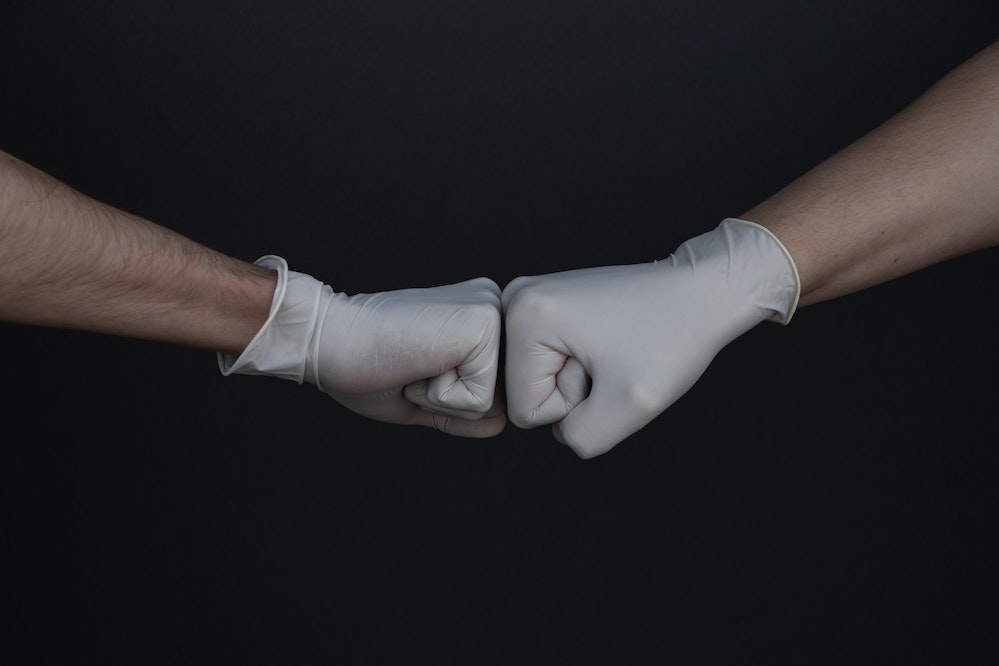
Common Appliances for Recycling
The Do’s And Don’ts for Small Appliance Recycling
Recycling Phones And Chargers
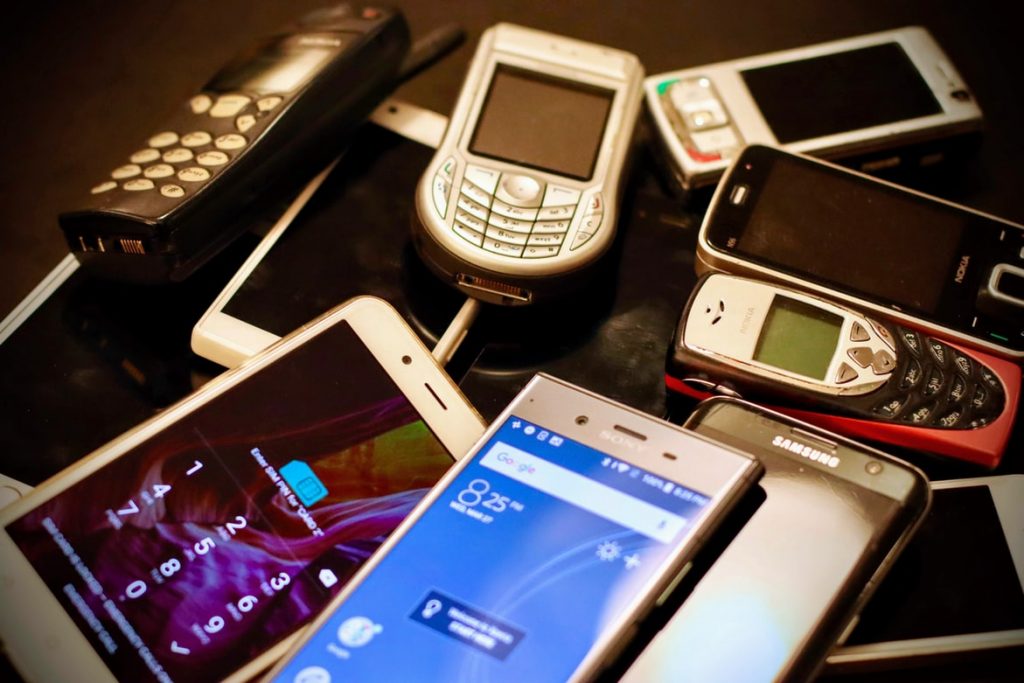
Do’s
• Consider giving a working phone to a friend or family member.
• Recycling is appropriate for phones that are damaged or no longer working.
• Back up or transfer necessary information to a new device if possible before you recycle your phone.
• Sign out of any accounts that you have signed into in settings.
• Erase all personal information from your device according to the manufacturer’s instructions.
• Unpair your device from Bluetooth and network connections.
• Remove SIM cards and other memory cards.
• Perform a factory reset.
• Ask whether the phone case and battery can be recycled too.
• Consider whether your old charging cables can be recycled with the phone or for scrap metal.
Don’ts
• Don’t throw your cell phone in the trash; it’s illegal to dispose of phones this way in some states.
• Don’t forget to back up and remove personal information before donating or recycling an old phone.
• Don’t neglect to recycle your old chargers if they don’t work.
• Don’t recycle your phone before reading the recycler’s rules; you may need to remove screen protectors and other add-ons before turning in the device.
• Don’t sell your phone privately if you can’t vouch for the buyer’s reputation.
• Don’t toss an old phone that you might be able to use as a webcam, music player or security camera.
Recycling Remote Controls
Do’s
• Remove the batteries and recycle them separately.
• Check whether you can recycle remotes for stereos, lights and other electronics.
• Keep the remote if you are selling or donating the associated device.
• Find out whether the device’s manufacturer offers a trade-in or recycling program.
Don’ts
• Don’t leave lithium-ion or button batteries in the reach of children.
• Don’t limit your recycling to television remotes; remote controls for other devices, including toys and lights, maybe recyclable.
• Don’t throw out remotes in the trash or recycling bin.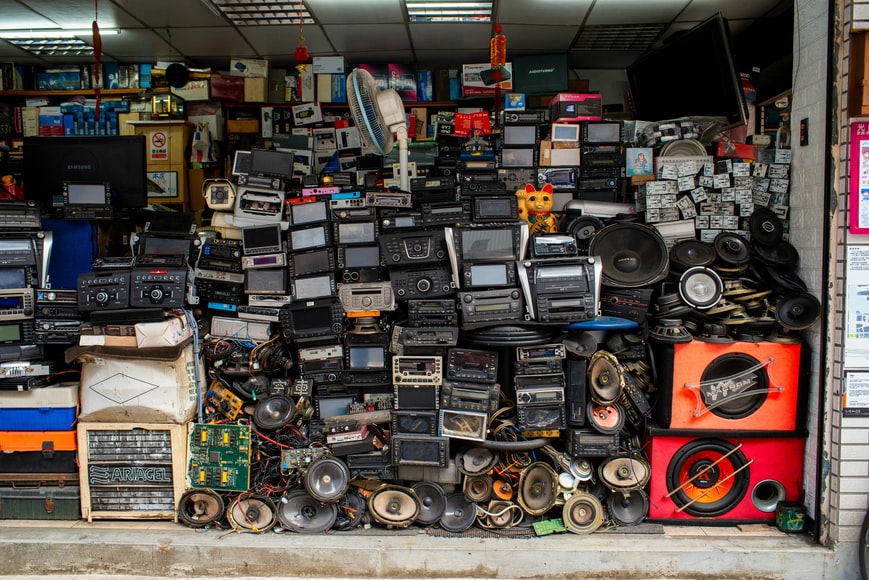
Recycling VCRs
Do’s
• Find out whether you can recycle cables and connectors that go with your VCR.
• Remove VHS tapes from the device before recycling them.
• Ask whether you can recycle the remote along with your VCR.
• Check whether the VCR must be in working order to be accepted by the recycling program.
Don’ts
• Don’t throw the VCR in your curbside recycling; your city likely won’t accept this item.
• Don’t put your VCR in the trash; these devices contain hazardous materials that can leach into the environment.
• Don’t recycle VHS tapes along with your VCR; these may be accepted separately, however.
• Don’t toss wires or cables in your recycling bin; they are probably not accepted and can become tangled with other items.

Lamps
Do’s
• Take the lamp apart and consider which parts can be recycled.
• Remember that although ceramic is generally eco-friendly, it is difficult to recycle.
• Note that glass and plastic bases may be the easiest to recycle.
• Remove the bulbs before disposing of the lamp; you can remove broken bulbs by cutting a potato in half and wedging it onto the broken glass before unscrewing it.
• Put the loose broken glass in a plastic bag.
• Consider repurposing an old lamp as a doorstop, vase or other home décor item.
• Think about recycling the cord for its scrap metal value.
• Ask whether you need to strip the lamp of its wiring before recycling it.
• Know that some states legally prohibit consumers from discarding mercury-containing bulbs in the trash that will end up in a landfill.
Don’ts
• Don’t throw a lamp out in the trash or your regular recycling bin.
• Don’t discard a CFL or bulb that contains mercury where it can break easily.
• Don’t throw away or recycle a working bulb that can be used in another lamp.
• Don’t forget to ask about recycling light fixtures.
• Don’t toss lampshades; they can be donated to thrift stores separately from the lamp base.
Electric Shavers
Do’s
• Consider donating or pawning an electric shaver that is in good working order.
• Remove the batteries from the device before recycling.
• Recycle a rechargeable battery properly.
• Ask whether you should remove motors and circuitry.
• Consider recycling your hairdryer, curling iron, electric toothbrush and epilator as well.
• Verify whether the manufacturer has a take-back or recycling program for the specific appliance.
Don’ts
• Don’t leave the battery in the appliance.
• Don’t throw the item in the trash or recycling bin.
• Don’t forget to discard the battery appropriately.
• Don’t forget to look for a backup battery inside a corded device.
• Don’t take apart the razor and circuit board if you don’t have to.
Toasters
Do’s
• Ask your local recycling collection facility if they accept toasters.
• If the toaster is new, check the warranty to determine whether it can be repaired or replaced for free.
• Remember that a fancier toaster may need to be collected as e-waste.
• Call the store where you purchased the toaster to ask whether they have a recycling or trade-in program.
• Consider donating a working toaster to Goodwill or a local charity.
• Verify whether your local hardware store accepts toasters for proper disposal and recycling.
• Remove the cord if the toaster is shorting out and you’re concerned that someone will try to use it.
Don’ts
• Don’t risk fines; throwing an old toaster in the garbage is illegal in some states.
• Don’t ignore the fact that you can typically recycle toasters locally.
• Don’t forget to unplug the toaster several days before you recycle it.
• Don’t bring a dirty toaster to the recycling facility; clean it first.
• Don’t leave a dangling cord to get tangled; wrap it around the appliance and consider taping it down.
Power Tools
Do’s
• Check with the manufacturer or service dealer to find out whether they have a trade-in or replacement program.
• Consider donating or pawning functioning power tools.
• You may be able to sell power tools for scrap metal.
• Because power tools contain electronic parts, they can usually be recycled as e-waste.
• Consider borrowing a power tool instead of buying a new one to prevent additional e-waste.
• Contain cords by taping them to the appliance.
Don’ts
• Don’t leave the battery attached or throw it in the trash; you should be able to recycle it separately.
• Don’t throw old power tools in the trash; some states have made it illegal to dispose of them in this manner.
• Don’t forget to ask whether you should disassemble the product before you recycle it.
• Don’t leave gas, oil or fluids in the tools.
Keyboard, Mic, Speaker, etc.
Do’s
• Donate functioning items.
• You should be able to recycle small office equipment through e-waste programs.
• Clean your items before recycling them to remove food residue or pests.
• Call ahead to ensure that the recycling center accepts your items.
• Ask about recycling wires, cords and chargers that work with your items.
• Consider repurposing items for art projects or household décor.
Don’ts
• Don’t throw your keyboard in the trash.
• Don’t worry about taking apart the items before recycling them.
• Don’t leave batteries in the tech accessories.
• Don’t recycle peripherals that are leaking any fluids.
• Don’t leave ink in your printer when you recycle it.
The Do’s And Don’ts for Large Appliance Recycling
Microwave Recycling
How to Recycle Microwaves?
Can You Throw Away A Microwave?
Do’s
• Contact your city about local pickup.
• Consider using a junk hauling company if you don’t want to prepare the appliance or drive it to the recycling facility.
• Try disassembling the microwave to reuse its components for projects or recycle them separately.
• Unplug the microwave for 24 to 48 hours before attempting to disassemble or recycle it.
• Remove the cord to recycle the copper wire on its own.
• If your trash company offers microwave pickup, ensure that they recycle it instead of putting it in a landfill.
Don’ts
• Don’t take apart a microwave that is still plugged in.
• Don’t assume your old microwave is safe or efficient; most last about seven years before they begin malfunctioning.
• Don’t throw away a microwave in a garbage can or dumpster.
• Don’t forget to ask the manufacturer about trade-in options.
• Don’t try to resell a malfunctioning microwave.
Dishwasher Recycling
What to Do with Old Dishwashers
How to Recycle Dishwashers
Do’s
• Clean food grime and residue before recycling it.
• Secure loose parts and cords before disposal.
• Try to repurpose some of the parts to reduce the energy needed for recycling.
• Remember that the wire racks can be used for storing plastic food containers and lids, holding artwork upright while it dries or drying dishes.
• Unplug the unit for a few days before recycling it to avoid hot spots and fire hazards.
Don’ts
• Don’t leave dishes or kitchen accessories inside before disposing of it.
• Don’t put it in your recycling bin.
• Don’t assume that your curbside trash pickup will recycle the appliance.
• Don’t neglect to call local repair shops to see if they can use any parts.
Refrigerator Recycling
How to Recycle a Refrigerator
How to Dispose of a Refrigerator
Do’s
• Consider taking the doors off; it’s a New York State law that prevents entrapment and a safer option if you’re keeping and upcycling an old fridge.
• Use a company that is experienced with refrigerator disposal to ensure that the toxic components are disposed of appropriately.
• Clean and sanitize the refrigerator before disposal.
• Unplug the refrigerator and let it air out for several days before drying the inside to deter the growth of mould and mildew.
• Drain the waterline and ice maker.
Don’ts
• Don’t attempt to dismantle a refrigerator without expert help.
• Don’t put other recyclables, trash or hazardous waste inside of the fridge.
• Don’t leave it on the street, where it can become a dangerous obstacle for vehicles.
• Don’t leave shelving or drawers inside the refrigerator unless you plan to resell it.
Washing Machine Recycling
How to Recycle a Washing Machine
Do’s
• Look for a large appliance recycling facility that will accept the machine as is.
• Consider dismantling the appliance to sell the scrap metal or make the appliance easier to move.
• Find out if appliance stores accept old washing machines for refurbishing or recycling.
• Ask whether local appliance stores or electric companies offer rebates for recycling outdated washing machines.
Don’ts
• Don’t move or dismantle the machine without draining the water.
• Don’t disassemble it while it is plugged in.
• Don’t forget to remove the cord if you want to sell it for scrap metal.
• Don’t lift the washing machine without proper equipment and precautions.
Stove Recycling
How to Recycle a Stove
Do’s
• Request a professional to remove and recycle stoves.
• Be careful when moving glass-top stoves so that the surface doesn’t shatter.
• Consider dismantling the stove yourself and sorting the parts for scrap recycling.
• Save the racks to use on your grill or outdoor fireplace.
• Unplug the appliance for at least 24 hours before disposal to let the electrical parts cool down.
Don’ts
• Don’t throw your stove in the trash, a dumpster or a landfill.
• Don’t assume that you can donate a gas range to charity; many organizations won’t accept them because they may leak or contain dangerous materials.
• Don’t forget to clean the oven before you recycle it.
Why We Should Recycle Old Appliances
Reduce Your Household Energy Consumption
Save Landfill Space
Avoid the Release of Harmful Substances
5 Ways to Recycle Household Appliances
1. Resale or Swap
• Post an ad on an online or newspaper classified section.
• Share the item on your personal social media.
• Check out community apps and pages for opportunities to sell the appliance.
• Hold a garage sale.
• Sell on a dedicated website, such as Decluttr, Swappa or eBay.
• Big box stores and electronics retailers
• Used appliance stores
• Metal scrap yards and recyclers2. Donation
• Habitat for Humanity ReStore – accepts new and gently used appliances and may pick them up locally for free.
• Salvation Army or Goodwill Industries – These organizations may be more likely to take small electronics than large appliances and often require you to schedule the drop-off.
• Local thrift shops – Every retailer will have different policies; you may find one that will pick up the item for free.
• Churches and schools – Churches, educational facilities and other non-profit organizations may accept working electronics and appliances.3. Appliance Pick-up
4. Sell for Parts
5. EPA RAD Program
Parting Words
Robust Service
Interested in Getting Started?
Have a big cleanout job that needs to be done right away? Contact us today. We'll get rid of your junk in a jiffy!
Fast & Reliable
What Our Customers Are Saying
Thousands of satisfied customers across America have shared their Jiffy Junk Experience.
